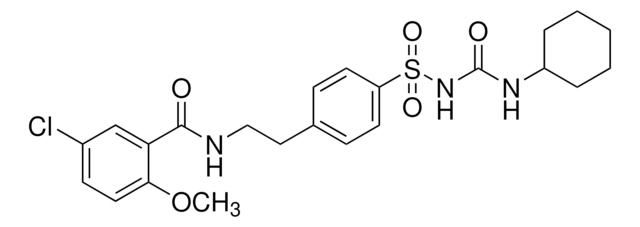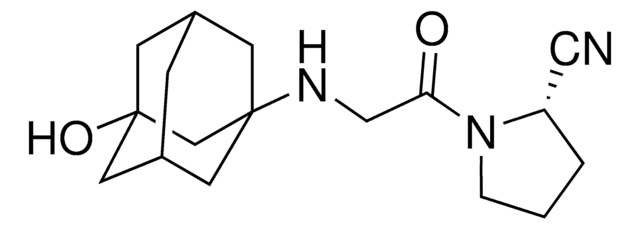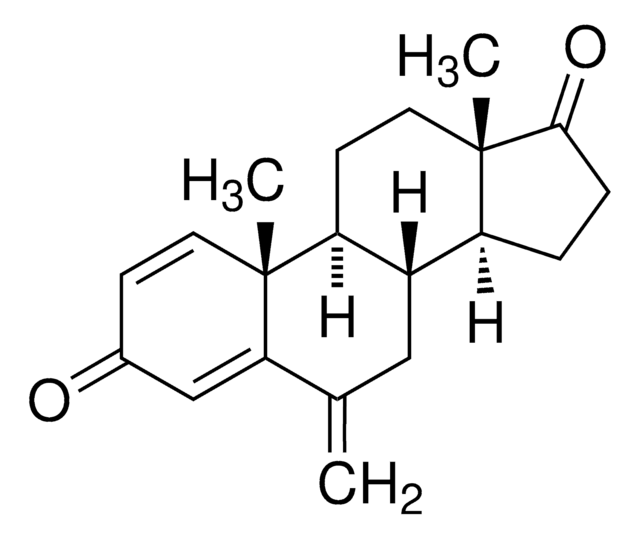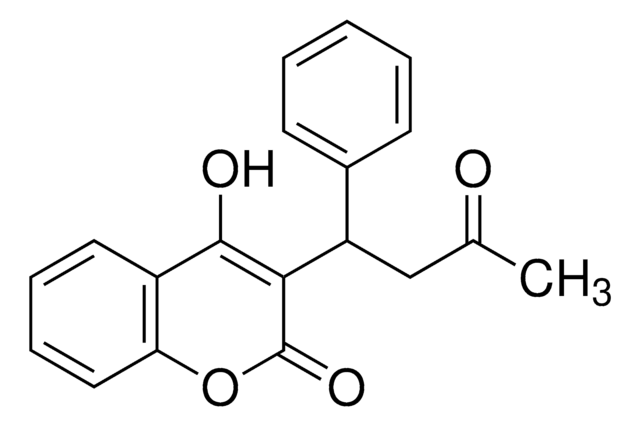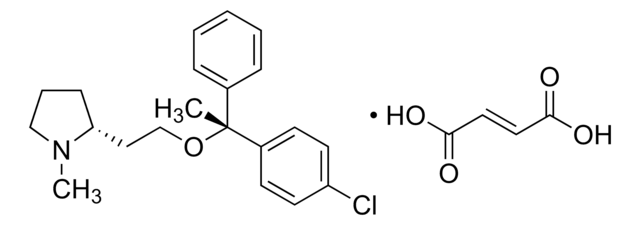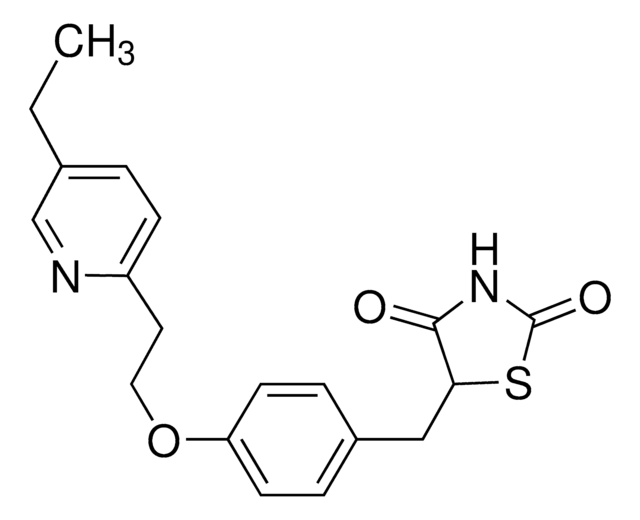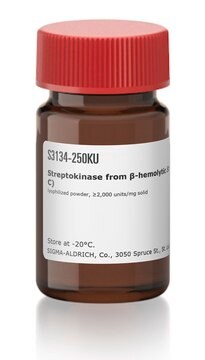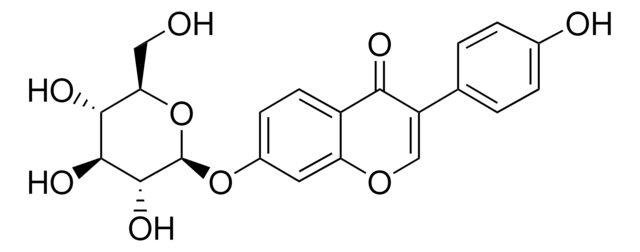G117
Glipizide
solid
Sinônimo(s):
1-Cyclohexyl-3-{4-[2-(5-methylpyrazine-2-carboxamido)ethyl]phenylsulfonyl}urea
About This Item
Produtos recomendados
Formulário
solid
Nível de qualidade
cor
white
solubilidade
methanol: 1.9 mg/mL
DMSO: 48 mg/mL
cadeia de caracteres SMILES
Cc1cnc(cn1)C(=O)NCCc2ccc(cc2)S(=O)(=O)NC(=O)NC3CCCCC3
InChI
1S/C21H27N5O4S/c1-15-13-24-19(14-23-15)20(27)22-12-11-16-7-9-18(10-8-16)31(29,30)26-21(28)25-17-5-3-2-4-6-17/h7-10,13-14,17H,2-6,11-12H2,1H3,(H,22,27)(H2,25,26,28)
chave InChI
ZJJXGWJIGJFDTL-UHFFFAOYSA-N
Informações sobre genes
human ... ABCC8(6833) , KCNJ1(3758) , KCNJ11(3767)
Procurando produtos similares? Visita Guia de comparação de produtos
Descrição geral
Aplicação
- chick embryo yolk sac membrane (YSM) and chorioallantoic membrane (CAM) assay
- MCF-7 breast cancer assay on chorioallantoic membrane (CAM)
- metastasis assays
- rat aortic ring assay
- in vivo matrigel plug assay
- 3-(4,5-dimethylthiazol-2-yl)-2,5-diphenyl tetrazolium bromide (MTT) assay
- flow cytometry
- western blotting
Ações bioquímicas/fisiológicas
Código de classe de armazenamento
11 - Combustible Solids
Classe de risco de água (WGK)
WGK 3
Ponto de fulgor (°F)
Not applicable
Ponto de fulgor (°C)
Not applicable
Equipamento de proteção individual
Eyeshields, Gloves, type N95 (US)
Escolha uma das versões mais recentes:
Já possui este produto?
Encontre a documentação dos produtos que você adquiriu recentemente na biblioteca de documentos.
Os clientes também visualizaram
Artigos
Glucose metabolism is regulated by the opposing actions of insulin and glucagon. Insulin is released from pancreatic ß cells in response to high blood glucose levels and regulates glucose metabolism through its actions on muscle, liver, and adipose tissue.
Nossa equipe de cientistas tem experiência em todas as áreas de pesquisa, incluindo Life Sciences, ciência de materiais, síntese química, cromatografia, química analítica e muitas outras.
Entre em contato com a assistência técnica